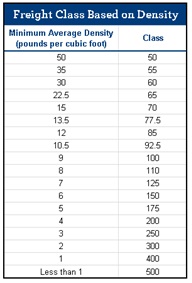Determining if a Shipment should be transported via Freight:
- Does shipment weigh more than 400lbs, including the weight of the pallet?
- Are there more than 10 boxes shipping together that weigh more than 400 lbs combined?
- Is the merchandise considered fragile?
If any of the above conditions is true, the shipment will need freight arrangements, even if the shipment weighs less than 400lbs total. If you have any questions on how to ship an order, please contact the Merchant Operations Team by using the “Report an Issue” function through the Extranet or email ugvendors@uncommongoods.com.
Arranging a Freight Pick-Up:
All freight requests must be submitted at least 24 hours prior to pick-up. If you want an early morning pick-up, your request must be submitted by 3pm EST the day before. Vendor must submit below information via the Extranet for each pick-up. For each PO shipping freight, click on the “Request Freight” button to enter freight spec information. (All fields are required unless otherwise noted):
- Address for the pick-up
- Contact name and phone # for the pick-up (contact must be available at the pickup site)
- Pick-up Date
- Preferred time-frame for the pick-up (must be minimum 4 hour window)
- PO #(s)
- Total weight (including the weight of the pallet(s))
- Number of pallets
- Freight class (optional)
- Dimensions of the pallet(s), including height (must not exceed 72”)
- # of cartons
- Do you need a lift gate? [answer Yes/No]
- Understand that this shipment cannot be sent COD
- Understand that the pallets for this shipment must not be sideways or double stacked
- Vendor can provide a quote and carrier name if possible (optional)
Once a vendor has submitted the above information via the Extranet, the Merchant Operations Team will review the request and schedule a pick-up accordingly. If there are any questions or concerns, we will let you know. Otherwise, the BOL will be forwarded as soon as the shipment is booked. Once the shipment is picked up, you are required to enter the PRO number in the tracking box on the Extranet.
Please note: due to circumstances beyond UG’s control, there may be times when a pick-up cannot be made by a carrier at the requested time. All efforts will be made to let the vendor know if rescheduling is needed, but unfortunately UG cannot guarantee pick-up.
If a vendor’s carrier quote has been provided, UG will still compare rates and decide the best carrier to use. UG will either book with a regular carrier or request that the vendor book arrangements based on the quote provided.
Vendor carriers must abide by the same rules as UG’s preferred carriers. Rules are as follows:
- Carrier must not deliver pallets sideways or double stacked
- UG dock hours are 9 AM to 3 PM – UG reserves the right to refuse shipments that arrive before or after this time, at no cost to UG
- Driver must call 718-210-1202 upon arrival to Dock 1 with a BOL
- Each shipment must have a packing slip with the correct PO number on it upon arrival
Glossary and General Freight Information
| LTL | = Less-than-Truckload |
| FTL | = Full-Truckload; defined differently by various carriers; anything over 7,000 lbs or more than 7 pallets may qualify |
| OTR | = Over-the-Road trucks do not use predetermined routes and do not stop at terminals, as LTL trucks do; they can be a good option for time-sensitive or larger shipments |
| BOL | = Bill of Lading – contract between a shipper and carrier about what is shipping and the terms of the shipment. At a minimum, includes pick-up address, delivery address, carrier’s name, pallet count, weight, freight class, and whether it is standard shipping or expedited. Should be created by whoever is paying for the shipment |
| NMFC | = National Motor Freight Classification – predetermined guidelines for Freight Classes, based upon a combination of dimensional weight and commodity; when in doubt, go with density |
Freight Classifications are based on four Characteristics:

